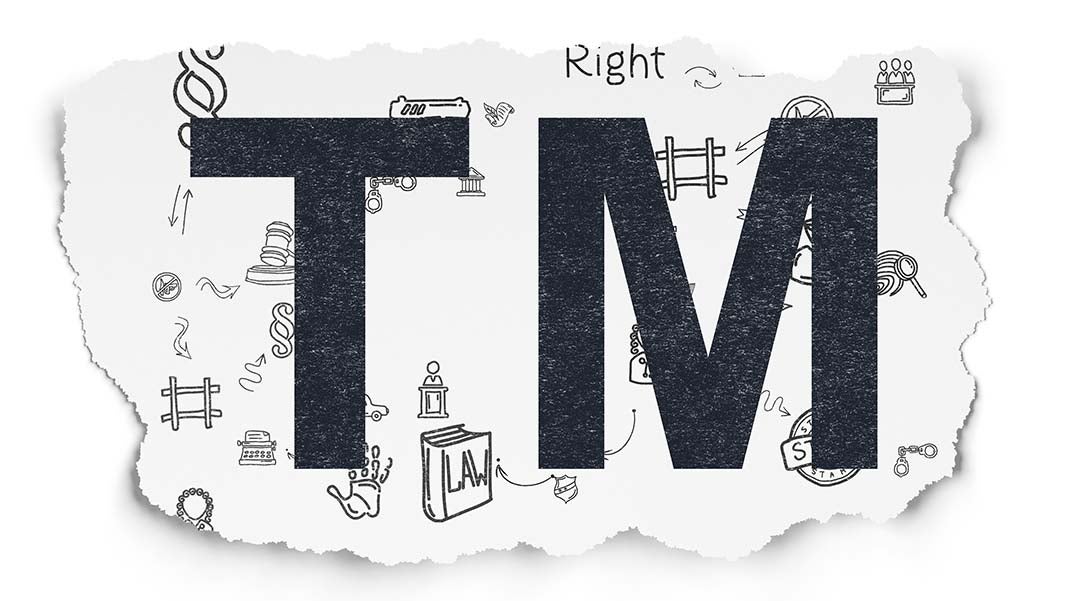Don’t Neglect These Trademark Basics to Protect Your Product
By: SmallBizClub

When it comes to intellectual property, protection is more than just in a name. Trademarks are anything that can indicate to consumers that a product originates from a specific source. Brand names and slogans are typical trademarks, but even a red sole on a shoe (a la Louboutin) can function as a trademark.
Search, Search, and Search Again
Trademark rights are established in the US by using the mark. Therefore, it is very important to conduct a search before starting to use a trademark, to determine if there is someone using a similar mark that may assert their rights against you.
Depending on the importance of the mark, there are various levels of searches that can be performed. If the mark is for the essential brand name, then it’s a worthwhile investment to run a comprehensive search through a search agency that covers all federal trademark registrations, state law registrations, common law uses, business names, social media accounts, domain names and websites. If the mark is not quite as valuable to you, or you have limited resources, then a general search of the web and the federal trademark database might be sufficient.
Trademark owners can register their mark with the United States Patent and Trademark Office (USPTO), and federal trademark protection can extend for so long as the mark is in use in relation to the products for which it is registered. Specimens of use also need to be filed periodically with the USPTO.
Once you have a trademark registration, it’s important to monitor the marketplace to ensure that no one else starts using a similar mark that would infringe on your rights. Once you’ve settled upon a properly cleared trademark, it’s important to remember to preserve evidence of your use of the mark. If you don’t obtain a trademark registration, you will still possess “common law” rights based on your use that give you some ability to enforce against infringements of your mark.
Be Wary of Using Personal Names
In the fashion industry, designers frequently want to use their own name as their brand name, a la Calvin Klein, Donna Karan etc. But a personal name can only be protected as a trademark if the public has come to see that person’s name as the source of the fashion products on which it is branded. This level of recognition doesn’t happen quickly, and it generally comes after extensive amounts have been spent on advertising and promoting that name as a brand name.
A designer just starting out in the industry must also understand who owns the rights to their name as a brand, because an employer trying to drum up the designer’s name into a brand will frequently try to protect its investment by having the designer sign over some of the rights in his or her own name!
Trade dress protects the look of an item or its packaging, e.g. the blue Tiffany box. This type of protection is extended only to the non-functional elements of the design. In order to acquire trade dress protection, the “look” of the design has to be associated with its particular source, so it typically takes years of heavy sales and promotion to rise to this level of association in the public’s mind. As with trademark protection, trade dress protection can continue so long as the owner is continuing to use that exact configuration/design in commerce.
Designs and Concepts Also Need Protection
Copyright law is commonly used to protect photographs, music, movies, and other creative output. However, it can also be used to protect fabric designs, jewelry, and portions of fashion pieces that are creative yet can be separated conceptually from their functional elements (e.g. an ornate belt buckle that is akin to a sculpture in and of itself, and adds no benefit to its function as a buckle). In the past several years there has been an explosion of lawsuits by fabric designers asserting that their copyrighted designs have been infringed, and these lawsuits frequently have settlements worth hundreds of thousands of dollars.
Register Early
In order to obtain a copyright registration, the creation must possess a certain modicum of creativity, but in practice this hurdle is quite low and registrations are granted frequently. However, a bracelet that is just a sequence of squares on a string would be denied a copyright registration based on the fact that there is no originality in combining a bunch of geometric shapes in a line.
Copyright registrations are cheap to obtain, and last for an extremely long period of time. The registrations give their holder the ability to sue for infringement in federal courts and get heightened “statutory” damages (regardless of the size of the infringer’s profits) and attorneys’ fees, among other benefits. It is very important to register a copyright as early as possible, as in most cases statutory damages and attorneys’ fees will no longer be available as remedies if the creator discovers an infringement before registering a copyright in their creation.
There are three different types of patents—utility patents (which protect inventions and methods), design patents (which protect the ornamental design of a product) and plant patents (which have limited use in the fashion world outside of perhaps the next dress that Lady Gaga wears to an awards show).
One very important tip to remember regarding utility and design patents is that you must file your application for a utility patent within one year of public disclosure of the material to be protected. A utility patent is the most expensive type of intellectual property registration to obtain, generally costing at least a couple thousand dollars for simple inventions and can run to $20,000 or even more for complex inventions.
Pay Attention to Appearance Protections
Design patents are a common tool for intellectual property protection in many industries. Design patent registrations are less expensive to obtain and can provide good protection against infringers attempting to copy your company’s aesthetically appealing product design. As with copyrights and trade dress, design patents only protect the ornamental appearance of an item and not any of its functional elements. Design patents garnered additional visibility when they were the main basis for Apple’s $1 billion judgment against Samsung (now since reduced).
The information above is merely the tip of the iceberg when it comes to the many laws governing the different forms of intellectual property protection. While it is tempting to skimp and attempt to obtain IP registrations through DIY legal websites, a mistake in the application process can compromise your ability to obtain a registration, or render any registration worthless from the start. There are also a number of mistakes that you can make in the usage of your intellectual property that can undermine your rights down the road.
The best means to ensure that you are taking the proper steps to protect your intellectual property is to consult with an attorney who specializes in the field as early as possible.
 Author: Jonathan M. Purow is an attorney with Gottlieb, Rackman & Reisman, P.C. Jonathan focuses on trademark, copyright and trade secret litigation and transactional work. He works with clients to establish, license and protect their intellectual property rights as necessary, from online rights enforcement to actual litigation. Find out more about Jonathan at http://www.grr.com/Attorneys-JonathanPurow.htm
Author: Jonathan M. Purow is an attorney with Gottlieb, Rackman & Reisman, P.C. Jonathan focuses on trademark, copyright and trade secret litigation and transactional work. He works with clients to establish, license and protect their intellectual property rights as necessary, from online rights enforcement to actual litigation. Find out more about Jonathan at http://www.grr.com/Attorneys-JonathanPurow.htm
3282 Views












